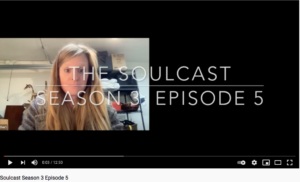From the Rector
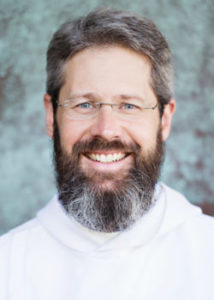 The Desire for an Escaped Goat
The Desire for an Escaped Goat
The word scapegoat entered the English language thanks to William Tyndale, the 16th century English biblical translator. He was struggling to translate a Hebrew word from Leviticus 16, a section that describes how the people of God were to make atonement, how to get right with God again.
These verses in Leviticus describe the high priest, in this case Aaron, taking two goats, and casting lots between them. One of the goats is sacrificed as a sin offering and the other is sent away to the wilderness. Contemporary Christian translations and long-held Jewish translations render it as the wilderness of Azazel. Tyndale, though, thought that it referred to something being removed, sent away.
In translating this unfamiliar Hebrew word, Tyndale coined a new word in the English language, scapegoat, or the goat that escaped, to convey the meaning of the passage, of an entity that takes on the fears and anxieties of a person or people and is driven out for it. It’s not that he was describing something new in the human experience, more that he was putting a word to it, a word that has stuck ever since. Because often, when an individual or a community is feeling deep anxiety, uncertainty, or fear, we identify a target to stand in for those feelings and in attempt to feel whole again, we drive that person or people away. We scapegoat them.
I’ve been considering this desire to scapegoat alongside my feelings of sadness and anger at the news out of Atlanta, of the mass shooting by a young white man of eight people, six of them Asian women. It appears to me that the shooter in Atlanta was trying to find a scapegoat at least one way, likely more. Struggling with an apparent addiction to sex, he targeted others to attempt to relieve himself from those feelings. It was not an accident that those targeted were women. And I don’t believe that it was an accident that those targeted were Asian.
This follows a pattern of scapegoating people of Asian ancestry that has existed in the United States for generations. It has been present in California since the Gold Rush, and can be clearly seen in the laws of our state and nation in the decades that followed, from the Chinese Exclusion Act of 1882 to Executive Order 9066 that ordered the internment of tens of thousands of American citizens of Japanese ancestry. But this desire for someone else to suffer for our pain can be seen in all kinds of ways.
We remain in the grips of this pandemic and feelings of fear, uncertainty, and grief are still coursing in our collective veins after a year of overlapping stresses and pressures. What happened in Atlanta this week is but one example of how some are attempting to relieve their pain by passing it on in violent ways to others, by preying on those who are vulnerable. Acts of violence have been perpetrated here in the Bay Area toward Asians, especially in the past few months, and it is heart-breaking.
I am daily reminded that while there is hope on the horizon, many are still in a place of deep suffering. And that there is a temptation to place our pain and sorrow on another person or group of people. But that is not the path that leads to redemption, healing, or wholeness. The only way forward will be found in a willingness to walk alongside each other, to suffer with one another, and to hold each other up as we make our way, together.
Peace,
Phil+
On Regathering
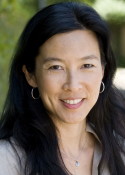
Palm Sunday in the Courtyard
As Covid-19 cases wane again and restrictions ease, we’re planning to host a courtyard service on Palm Sunday, March 28, at 9:00 am. It will be BYOC, Bring Your Own Chair! We will accommodate a larger group for this special service, but there is still a 65 person capacity. So please RSVP here, and if you find later that you cannot make it, please notify Maggie so someone else can use that seat.
The plan. Following Palm Sunday, the staff is busy designing in-person services for Holy Week on Thursday, Friday, and Saturday (April 1, 2, and 3). And if all goes well, we will hold services in the sanctuary starting on Pentecost, May 23, or perhaps sooner. So stay tuned!
The risks. We’ve learned a lot about regathering during Covid times, largely from observational data from some in-person communities that have reopened, including some in Marin and San Francisco counties. When masks and social distancing are regularly practiced, the rates of transmission have remained extremely low to none—even when there were outbreaks in the wider community. Whenever higher rates of transmission occurred, they were linked to a failure of adequate masking.
The low-down: masks + distancing = on par with vaccines. Vaccines are becoming more and and more accessible to adults and essential workers. But even as the overall vaccination rates remain low, a well-fitting mask together with social distancing is as effective in reducing the risk of infection as two doses of the Moderna and Pfizer vaccines (93-96% effective). At All Souls services, we will strictly enforce masks and proper distance. This will apply to outdoor services as well as future indoor gatherings, which will be well-ventilated. For those who want more effective protection, the CDC recommends double masking: a surgical mask beneath a cloth mask, or a tight-fitting N95.
We are confident these steps will help keep our community safe, and appreciate your continued patience, faith, and good humor.
—Cynthia Li, MD, on behalf of the ASP Regathering Task Force
From the Junior Warden
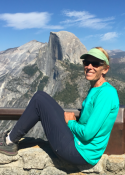 Our Communal House
Our Communal House
In my youth I thought that going to church was a moral act, and that I could receive some sort of heavenly “Brownie Points” for my regular attendance. Certainly, this view changed over time, but it was two years ago at our annual meeting that I finally understood what a church community is. Listening to Phil read from the annual reports of 25 and 50 years ago, I realized that churches are essentially volunteer organizations that remain as long as people continue to volunteer. We are carrying on what those people were doing 25 and 50 years ago. We are here today because of what they did. And if we continue, those coming after us will have a church, and they too, will make possible an ongoing community for those who come after them. If we were to stop volunteering, if we were to end our commitment to one another and to this place, this particular church would end.
We are a bunch of volunteers. We produce no product. We make no profit for shareholders. Instead, we exist for one another with a place to meet, to learn, to love, to serve the world.
Understanding this, my view of my role in our church changed. I began to feel actively responsible for our community. I remember one day when a disoriented young woman was disrupting the church service, ordinarily I would have wondered who was going to solve this problem and help this woman. When no official person quickly appeared, I realized that I could help this woman. I spoke to her, escorted her to the back, where eventually Emily joined us and beautifully engaged and assisted this distressed woman. Another time I remember standing up after a service while holding on to the pew, and instead of steadying me, it moved. I was surprised it was not securely fastened to the floor. After inquiring about it, and consulting John Love—who seemed to be the point person for such things—I learned how to fasten the pews to the floor.
Early last month I was “invited” by Emily to help the Cockle family repair the preschool flooring that had been damaged when the it was flooded due to complications with the Jordan Court construction. John Cockle had done a similar task 10 years earlier and was again recruited along with his wife and son, Anne and Jack. John and his family had worked all day Saturday doing the preparation work and had returned for another long day to finish the flooring on Sunday. Don Gates also appeared, and Jeannie Koops-Elson came by to drop off blueberry muffins. Seeing this crew could use an extra hand, in spite of an injured index finger, Jeannie put down her muffins, picked up a hammer, and set to work alongside us. Volunteers. That’s what we are here. Working together to create our community and to steward our house.
I have come to see our building as our house, our communal house for which we all share responsibility. And though the church is certainly not the building, the building makes possible our community.
I see our garden as our communal space too. It is ours; we enjoy it; we care for it. At the end of February, I heard that Suzanne Nelson was heading to the courtyard to work—to revitalize and maintain the living, growing things there. I asked to join her and Robert to see what they were up to. With gloves, clippers, rakes, a broom, and two green barrels, they were creating a more beautiful space for us to worship and to enjoy—so that it could become a place to see the glory of God in even the smallest things. They were engaging in old fashioned stewardship of our place.
What I have learned is that we are a bunch of volunteers. And since we choose to commit ourselves to this place, we need to be good stewards of our space. Our home. Our garden. Our buildings. We need to steward this special place on earth at Cedar and Spruce that we have been given. What a miracle really.
Over the years, many people have been faithful stewards of our church home. I am relatively new at All Souls, but I have heard the names of some devoted stewards, all of whom have spent many hours at all times of the day or even the night, coming to care for our church spaces: Fred Lothrop, Bob Kaiser, Roger Glassey, John Love, John and Anne Cockle, Martin Ortega, Suzanne Nelson, Betsy Dixon, Suzanne Siebert, Caroline Putnam, Jim Feeley, Ed Hoffman, to name only a few in recent times.
Yesterday as I was leaving church after picking up a book from Maggie to read to her group of youngsters over Zoom, I met a woman walking in a PG&E vest. I asked her if she were working at the Jordan Court site, and she said she was. I said proudly, “This is my church.” She asked me about what is going to happen at Jordan Court. I told her: we are building low income housing with some units for elders, for the disabled, for the homeless.
So now we are sharing our home with others, making a place where 34 people who have had trouble finding a home, will have a place to live. Volunteers. Volunteers sharing our space, and now we are building a new space that we will come to steward in partnership with the city of Berkeley.
In the coming year, as your Junior Warden, I will be working with others to create a systematic process and developing small stewardship teams with limited responsibility to continue the tradition of stewarding our precious building and garden, engaging professionals when appropriate, and building community in the process. My focus is our present building and grounds, not Jordan Court, which will have its own process. I personally have limited skills in maintenance. But I can help; I can learn. I have some time. I like spending time with other sojourners, other volunteers on this journey together. Perhaps you would like to as well.
Be on the look-out. You may receive a call to gather or to join a small team to steward a very limited space in our church that you frequent often—the youth rooms, or the library, or the classrooms, the sanctuary, the sacristy, the music area, the Parish Hall, the kitchen, or the garden or any space that you especially care about. You may have some time, or a specific talent, or simply a desire to be part of a small group to do a limited task as a family or as a fellowship group. No need to wait to be asked, however. Feel free to email me with an interest in adding your name to a list of those willing to be part of a small team to help in a limited way with the stewardship of our place or those with a specific talent you are willing to share.
The Junior Warden is sometimes called “The People’s Warden.” As your Junior Warden, I hope to shepherd this process for developing a strategy for being stewards together here, in this moment of time, in a way that brings us joy, that uses our talents and time wisely, and that helps us to understand who we are and what we intend to do here together.
At your service,
your Junior Warden, Kaki Logan


Lenten Reflections
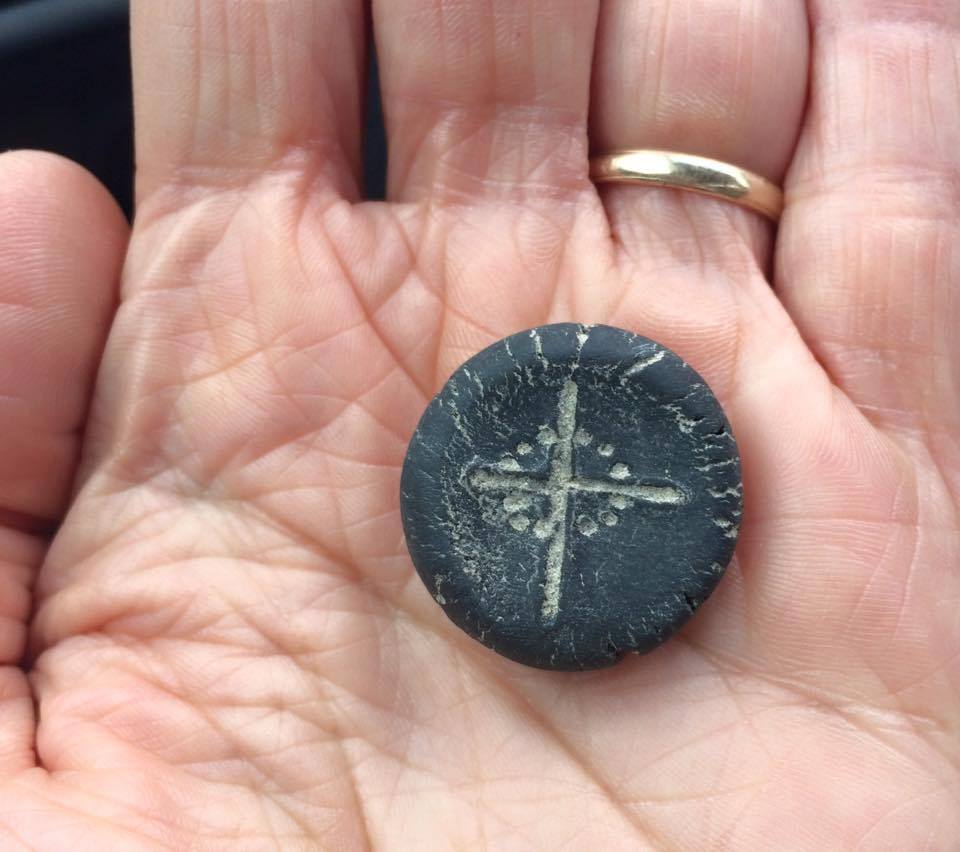 Reflections on the Reflections
Reflections on the Reflections
This week, I asked two of our Lenten reflectors to reflect on the process of writing their reflections and why/how they chose the prompt that they chose. Below is a reflection by Forrest Sedgwick on the process, and Carol Terry on the prompt. What richness exists here among us.
I really did want to do Lent this year. For several years I’ve been moving in and out of a moderate depression and throughout 2019 and 2020 it became worse. But I was able to do a lot of work and 2021 has been much better. In fact, things have been better than they have been in years. Somber meditation and prayer was NOT what I was looking for. But when I saw the prompts I felt drawn to this one: “What fears, anxieties, beliefs etc. in me get in the way of connection with God?” I have been trying to integrate different parts of who I am together into a whole, and this prompt was perfect. And it rang true: there are parts of my life where I simply don’t involve God. I wrote and re-wrote some things for the prompt, and then decided that I wanted to have more emotional communication. I tried making a video, but that wasn’t working for me. So I went with just the audio instead. I recorded it in a closet (clothes will muffle that echo-y sound from recording in a room with hard walls) in the morning before the sun came up. I wanted to end it with something like a confession, and I wanted to find that feeling of needing forgiveness. I surprised myself with the impact this realization had on me, it is a painful truth, and I left the end kind of hanging. I know that what I need most in my life isn’t “happiness.” I know it’s not wallowing in misery either. I look for God’s purpose for me, sometimes. What I need is to live more fully in that search.
–Forrest Sedgwick
The original question for Lent 17 was: what patterns, behaviors, beliefs are keeping me shut off from God’s love? Personally, I don’t believe we are ever shut off from God’s love. It’s just that sometimes the connection is faulty. An instance of that happened for me when a medical catastrophe was visited upon my three-year-old (a malignant brain tumor with a very low survival rate). Like a good Lutheran, I turned to Scripture and came up with the sweet: “Are not five sparrows sold for two pennies? Yet not one of them is forgotten in God’s sight” and the creepy: “But even the hairs of your head are all counted” (Luke 12: 6, 7). Then I backed up a chapter and hit pay dirt: “Is there anyone among you who, if your child asks for a fish, will give a snake … or if the child asks for an egg, will give a scorpion?” You can see how this would resonate with someone who felt they had been given just that. My immediate reaction was, “Oh yeah? Who are you kidding? what do you call this?” Anger can be very useful at times like this. But by and by, inertia takes over and you are just too busy playing the hand you were dealt, to switch to a more secular metaphor. Speaking of the secular, there is always the explanation that the universe is random, genetic mutations happen, and there is such a thing as bad luck. Or, as the bumper sticker says: “shit happens.”
So where is God in all of this and how do you claw your way back? To this day, I’m not really sure. Dare we give credit to the Holy Spirit? Definitely. That, after all, was the full context of the scorpion verse that I so blithely used for my own ends: “If you then, who are evil, know how to give good gifts to your children, how much more will the heavenly Father give the Holy Spirit to those who ask him.” And maybe even without asking. Or, as another bumper sticker would have it: “Let go, let God.” I love bumper stickers.
–Carol Terry
From the Music Department
 Composer of the Week from March 14th
Composer of the Week from March 14th
Thomas A. Dorsey (1899–1993) has been called the “Father of gospel music.”
Religion and music were constants of Dorsey’s upbringing. His father Thomas Madison Dorsey had graduated from Atlanta Baptist College (now Morehouse College) but had opted not to pursue full-time ministry due to his qualms about the assimilationist culture within the Baptist Church; instead he worked as a sharecropper, preaching part-time in the months after harvest. Dorsey’s mother Etta saturated their world with music, constantly humming, organizing “sings” with family and neighbors, and playing pump organ. Other relatives introduced him to country blues and shape-note singing. When Dorsey was eight years old the family moved from the small town of Villa Rica to Atlanta, where he would discover opportunities to play piano at vaudeville and shows, house parties, and juke joints. Performing in these venues allowed him to cultivate skills in improvisation and music-reading, both essential for a working keyboardist.
In 1919, Dorsey moved to Chicago, then one of the largest cities in the world and home to multiple bustling music scenes. Encountering stiff competition for performance work, he turned to writing blues songs. This craft earned him a reputation that landed him the role of band-leader for the legendary blues singer Ma Rainey, with whom he toured for two years. He then fell into a period of severe depression that ended in a sort of spiritual re-birth, which prompted him to focus his energies on sacred music.
Rather than abandon the style in which he had specialized, Dorsey incorporated aspects of blues into his new religious songs. This was significant because Chicago’s “old-line” Black churches held a preference for European choral music and traditional hymnody, and for the specific behavioral regimes associated with those repertoires: listeners were to be silent, singers were to adhere closely to musical notation, and neither were to move their bodies much. In these contexts, blues and its practitioners were sometimes regarded with suspicion. Blues music normalized forms of spontaneity and improvisation for which classical music made less room. Furthermore, as womanist theologian Kelly Brown Douglas has argued, the culture of “civility” that prevailed in many contemporary social spaces had a long history of casting “blues bodies,” especially the bodies of Black women like Rainey, as dangerous and hyper-sexual. Beginning in the late 1910s, however, thousands upon thousands of Black southerners immigrated to Chicago, many bringing drastically different assumptions about how bodies could behave and sound in worship; southerners were more likely to be accustomed to shouting, moaning, and otherwise responding to preaching, prayer, and music however they felt the Spirit move them. Many of these people joined the “old-line” churches.
These social and cultural collisions generated many tensions, negotiations, and compromises. In the 1930s, for example, some “old line” churches began allowing “gospel” choirs not in place of but alongside their senior choirs. The context is crucial to understanding why Dorsey wanted to bring the blues into his sacred songs. He saw blues as capable of captivating an audience. As historian Michael W. Harris has written, Dorsey was looking to create in church the same “depth of feeling and the oneness between performer and audience that he helped create night after night with Ma Rainey.”
As his influence spread, through several thousand songs and through his work as a choir director, Dorsey created much of what we think of as fundamental to modern gospel music. His contributions extended beyond musical style, touching on aspects of performance practice still used by today’s gospel choirs: he required singers to memorize their music, freeing hands for clapping, and, he thought, freeing choirs’ musicality from the influence of notated scores. While we will use notation this morning to sing his Precious Lord, take my hand, we will be taking small rhythmic and melodic liberties that are characteristic of gospel performance, each using our bodies and voices in ways that feel right for us. Through this we will aim to create that “oneness” with each other—and with the One who takes our hand—that Dorsey himself sought.
-Dr. Jamie Apgar
Weekly Worship
Sunday Mornings: Join us at 9am on Zoom for our last (for now) Zoom 9:00am worship service. Or (and!) join us for the live stream of Sunday’s 11:15 service, which can be accessed through our website or by tuning into our All Souls Episcopal Parish Facebook page. Click here to watch on Sunday morning.
Additionally, you can try out live streaming our 11:15 service to a Zoom call, so that you can participate in church with fellow parishioners. Click here to get into the 11:15 Zoom call, and please send us a note this week about your experience with this new mode of virtual church!
Wednesday Mornings: 9:00am PDT
Join the Zoom call here: https://us02web.zoom.us/j/86087951049?pwd=THNxbjlqMm5zdjc5RGNLWkFrZk16QT09
Meeting ID: 860 8795 1049 Password: 520218
Thursday Night Compline (Night Time Prayers): 8:30pm PDT
Join Zoom Meeting: https://us04web.zoom.us/j/78630294068?pwd=cmdoenJYRWUwR2J6QkhxSHNsakt0UT09
Meeting ID: 786 3029 4068
Passcode: Compline
Holy Week Worship
Here is the worship schedule for Holy Week 2021: more information regarding these services will be in next week’s Pathfinder.
You can register for in-person Holy Week Services using this link. In order to allow for the most amount of people to participate in an in-person Easter service, we ask that you only sign up for either the Saturday Vigil OR the 9:00am Sunday morning worship. As always, you are welcome to check the registration link on the evening prior to the service and take any open spots that remain.
Maundy Thursday: Agape Meal via Zoom at 6:45pm followed by worship at 7:30p via live stream & Zoom
Good Friday:
- 8-10am and 3-5pm personal prayer in the Church – contact Erin Horne to sign-up for a time
- 12-3p Contemplative Service in-person in courtyard (broadcast from the indoor service) + live streamed
- 4:00pm Holy Week worship for families in the courtyard
- 7:30p live stream & Zoom
Holy Saturday: 7:30pm Easter Vigil in-person in the courtyard, live streamed & Zoom
Easter Sunday:
- 9:00am in-person in the courtyard
- 11:15 live stream & Zoom
Adult Formation
7:30am Reading Between the Lines Bible Study Contact Kate Murphy to join that Zoom call.
10:10 Reading Between the Lines Bible Study Contact Daniel Prechtel to join that Zoom call.
Missed the previous week’s class?? Not to worry, we’ve got you covered. We’ll be recording all of the Adult Formation offerings and loading them to the Adult Formation page of our website. Click here to get there and access the class recordings.
Children, Family & Youth News
Children’s Ministry
There will be no Children’s Chapel this week at 10:10. On Sunday, March 21st, there will be an outdoor Family Worship service in the courtyard at 3:00pm. Beginning on Palm Sunday, March 28th, we will resume outdoor Children’s Formation in the Courtyard at 10:10. If you’d like to receive updates about Children and Family Ministries, but do not subscribe to the Family Bulletin, please email Maggie Foote (maggie@allsoulsparish.org) for more information.
Kid’s Book Club meets Wednesdays at 4:00pm on Zoom. We’re reading The Magic in Changing Your Stars by Leah Henderson. Hope to see you there!
Youth Ministry
Youth group will resumes meeting outdoors every other Sunday! Our next meeting will be Sunday, March 28th, at 3:00pm at Tilden Park. Hope to see you all there, and if you have a young person in your household in grades 6-12, and do not receive updates about Youth Group events, please email Maggie at maggie@allsoulsparish.org to be added to the list!
Other News & Notes
Soulcast: Our Weekly Video Announcements
Check out Season 3: Episode 5 of the Soulcast!
Lent 2021 Practices
Click here to learn about what we’re up to this Lenten season and to participate with the daily Lenten reflections that our fellow parishioners are writing for us!
Community Loom for the Reredos (aka the back wall in the church)
Our community loom for Lent is going to be out at the Spruce St steps all day on Saturday (see picture below). Come on by to spend a little time adding to it! Weaving can be a really lovely contemplative practice— it’s also very easy and forgiving, so no experience needed. We’re hoping this will be a collaborative piece that we build as a community over the weeks of Lent. While you’re here, write a prayer and tie it on our prayer arch. All materials are provided!

Stephen Ministry: We are here for you!
2020 was a challenging year, right?! Most of us have been struggling and overwhelmed. You are not alone. Stephen Ministers understand and are available to listen, support and pray for you. We can offer you a confidential caring relationship or an occasional phone call to help you through these ever-changing times. Contact Maggie Foote at (513) 309-1079 or Madeline Feeley at (510) 495-4512 so we can be there for you.
Summer Book Group
During the summer, All Soulsians select a book to read together and devote the 10:10 Sunday adult formation hour to discussing that book. The Adult Formation Committee requests your nominations for a book for Summer Book Group. Books may be fiction or nonfiction. After nominations are gathered, we will put nominees up for a parish-wide vote. Beginning in June 2021, all are welcome to join us in discussing the book during formation hour at 10:10 am. Help us pick the book by submitting suggestions either here or by emailing carajobson@hotmail.com
Ongoing Canned Food Drive
The ASP Food Drive continues to pick up and deliver food for the Berkeley Food Pantry on a weekly basis. Food contributors and drivers participate every other week. Please email Cathy: ogoshca@yahoo.com for more information.
Meal Train
If you are able to help provide some meals for parishioners in need, please contact Cathy Goshorn to help out! We are in great need at this time to help care for each other––please consider helping other All Soulsians in need by providing meals or gift cards for meals. You can reach Cathy at ogoshca@yahoo.com.




